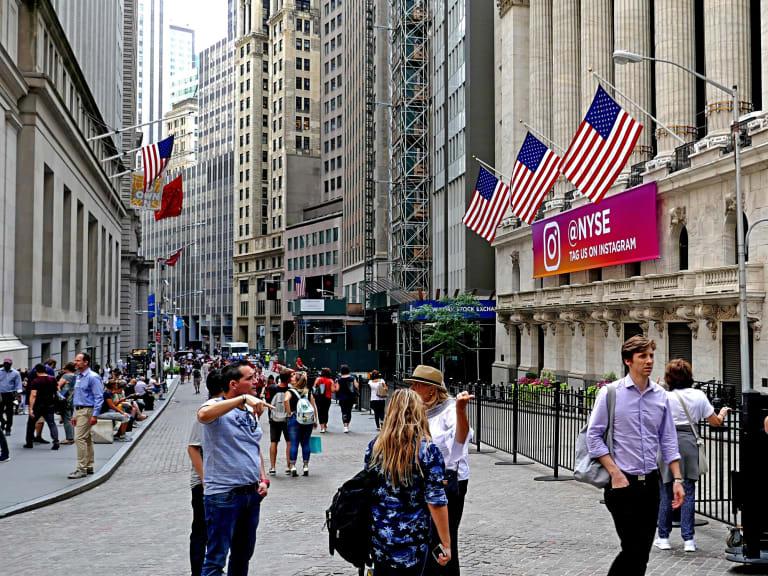Wall Street’s long-held confidence in the so-called “Kevlar economy” – resilient, insulated against shocks, and seemingly bulletproof – has been abruptly shattered. Recent market turbulence and economic indicators have exposed vulnerabilities that were previously overlooked or underestimated by investors and analysts alike. Despite an outward appearance of strength, red flags had been quietly accumulating beneath the surface, raising questions about the sustainability of growth and stability. This article examines the unraveling of Wall Street’s durable economic myth and the warning signs that went unnoticed until it was too late.
Wall Street’s Confidence in the Kevlar Economy Faces Unprecedented Challenges
Investors once embraced the notion of a Kevlar economy-a resilient financial landscape capable of withstanding shocks and turbulence. Yet, recent market behavior has exposed cracks in this armor, revealing vulnerabilities that analysts had largely overlooked. Despite robust quarterly earnings and steady employment figures, undercurrents such as rising corporate debt, supply chain disruptions, and inflationary pressures have collectively chipped away at Wall Street’s confidence. These factors signal a recalibration of expectations, with many portfolio managers now bracing for a more volatile and uncertain horizon.
Several indicators that previously flew under the radar have now triggered alarm bells. Below is a snapshot of key economic stress points that contributed to this shift:
- Corporate leverage: Debt-to-equity ratios hitting multi-year highs.
- Consumer sentiment: Declining confidence amidst soaring living costs.
- Supply bottlenecks: Prolonged delays impacting manufacturing output.
- Interest rate volatility: Rapid shifts unsettling fixed-income markets.
| Indicator | Current Level | Historical Benchmark | Implication |
|---|---|---|---|
| Corporate Debt Ratio | 78% | 65% (5 years ago) | Elevated credit risk |
| Consumer Confidence Index | 85 | 110 (pre-pandemic) | Weakened spending outlook |
| Supply Chain Delay (days) | 45 | 20 (normal) | Production slowdowns |
| Interest Rate Fluctuation | ±0.75% | ±0.20% (average) | Market unpredictability |
Hidden Warning Signs That Foretold the Market Turmoil
Despite widespread confidence in the resilience of the economy, subtle indicators quietly signaled an impending shakeup. Analysts point to a series of overlooked data points, including a gradual spike in credit defaults among mid-tier corporate borrowers and an unusual flattening of the yield curve, which historically presages downturns. Meanwhile, consumer sentiment indexes showed early signs of wavering optimism, contradicting the bullish narratives dominating Wall Street’s headlines.
Behind the scenes, seasoned investors noted several anomalies that traditional metrics failed to capture:
- Rising inventory buildups in key manufacturing sectors suggested demand slowdown.
- Liquidity tightening as short-term funding costs increased sharply.
- Escalating commodity price volatility, disrupting profit forecasts.
These factors combined to form an undercurrent of risk that was easily dismissed in favor of techno-optimism.
| Warning Sign | Indicator | Impact |
|---|---|---|
| Credit Defaults | +15% in Q1 | Increased lending risk |
| Inventory Levels | +20% YoY | Demand slowdowns |
| Yield Curve | Inverted briefly | Recession signal |
| Commodity Volatility | +30% variance | Profit margin pressure |
Strategic Moves Investors Should Consider to Navigate the New Economic Reality
As markets recalibrate from shattered assumptions of an impenetrable “Kevlar economy,” investors must pivot quickly to strategies that acknowledge heightened volatility and emerging risks. This new terrain demands a diversified portfolio, emphasizing assets that demonstrate resilience amidst economic turbulence. Consider incorporating inflation-protected securities, quality dividend equities, and selective exposure to commodities that historically perform well during periods of uncertainty. Additionally, maintaining a healthy cash reserve could provide the agility necessary to capitalize on sudden market dislocations.
Beyond asset allocation, a sharpened focus on risk management and real-time data is crucial. Investors should leverage technology-driven analytics to detect subtle warning signs that traditional metrics may overlook. Here are key moves to embed in decision-making frameworks:
- Stress-test portfolios against multiple macroeconomic scenarios
- Increase holdings in sectors with strong balance sheets and pricing power
- Limit exposure to highly leveraged firms vulnerable to tightening credit conditions
- Evaluate alternate income streams such as real estate investment trusts and infrastructure funds
| Strategic Move | Rationale | Potential Impact |
|---|---|---|
| Portfolio Diversification | Mitigates concentrated risks | Improved downside protection |
| Real-Time Analytics | Early detection of market shifts | Timely tactical adjustments |
| Selective Sector Exposure | Focus on financial robustness | Reduced volatility & enhanced returns |
| Liquidity Maintenance | Flexibility during market stress | Opportunity to deploy capital opportunistically |
The Conclusion
As Wall Street grapples with the unraveling of the once-lauded “Kevlar economy,” analysts and investors alike are reassessing the vulnerabilities that went unnoticed beneath the surface. What was once perceived as resilient now reveals cracks that demand closer scrutiny moving forward. The episode serves as a cautionary tale for market watchers, underscoring the need for vigilance in parsing economic signals and preparing for volatility in an increasingly complex financial landscape.
